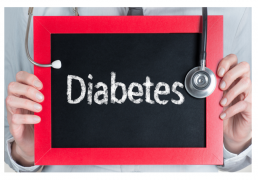Elderberry (Sambucus Nigra)
Sambucus nigra, Elderberry
Elderberry, also known as Sambucus nigra, is great for colds and may help invoke sweating and diuresis. It helps induce sweat and relieves joint and muscle pain during fevers. There are small studies to support antiviral properties, immune modulation and antioxidant properties.
Studies involving patients with influenza have shown a reduction in symptoms when taking Elderberry. The studies reported Elderberry shortens the duration of flu symptoms such as fever, fatigue, headache, sore throat, cough and body aches. These studies concluded that further larger studies are needed to confirm the results.
In addition, in vitro studies (not humans) have proven Elderberry to be effective against numerous strains of influenza. It is thought that the constituents help neutralize the activity of the hemagglutin. Hemagglutin is found on the surface of the virus and by neutralizing the activity of hemagglutin the virus becomes inactive and is unable to infect cells.
Elderberry can be used during active flu (optimally combined with Oregano Oil or Echinacea Goldenseal), or used as a preventative to avoid getting sick during the flu season.
Elderberry has a high concentration of anthocyanins. These are purple pigments (also what gives Elderberry its color) serve as antioxidants and enhance immune function (by immune modulation) stimulating the innate immune system and boosting the production of cytokines. Cytokines are proteins that regulate the immune response. Elderberry is also rich in flavonoids, quercetin (thought to be a natural antihistamine) and vitamin A and C. It can be taken daily to help strengthen a person’s immune system. Stronger immune systems have a better chance of fighting infections.
Elderberry may also offer cardiovascular protection. This is thought to be due to its oxidative properties and reducing the oxidation of LDL cholesterol. LDL is bad cholesterol and is a risk factor for cardiovascular disease. By helping to reduce LDL it may benefit people with high cholesterol. In addition, it has the ability to potentially improve endothelial cells to help with vascular function. Studies have been very small and larger studies are needed to warrant the effect on LDL and the cardiovascular system.
At Rancho Pharmacy we carry Elderberry, both for adults and kids! Stop by today to get your bottle of Elderberry!
References:
1. V. Barak, T. Halperin, I. Kalickman. The effect of Sambucol, a black elderberry-based natural product, on the production of human cytokines: I. Inflammatory cytokines. European Cytokine Network. 2001;12(2):290-6 https://www.ncbi.nlm.nih.gov/pubmed/11399518Accessed on March 23, 2020
2. http://www.altmedrev.com/archive/publications/10/1/51.pdf. Accessed on March 23, 2020
3. Zakay-Rones Z, Varsano N, Zlotnik M, et al. Inhibition of several strains of influenza virus in vitro and reduction of symptoms by an elderberry extract (Sambucus nigra L.) during an outbreak of influenza B Panama. J Altern Complement Med. 1995;1(4):361–369. doi:10 Access on March 23, 2020
Vitamin D
Vitamin D AND the Immune System
COVID-19 is increasingly on people’s minds and many are focusing on how to keep their immune systems strong. There is a link between vitamin D and strong immune systems. Vitamin D can regulate the innate and adaptive immune responses. When vitamin D is deficient there is a link to autoimmune disease and an increased susceptibility to infection. Cod liver oil, which has a high content of vitamin D, is often used in tuberculosis treatment. A report that included almost 19,000 patients from the years of 1988 to 1994, showed patients reporting low levels of vitamin D (<30 ng/ml) also self-reported recent upper respiratory infections. Although recent studies have not shown consistent results, most likely due to methodological concerns, there is one well-designed study in school aged children that demonstrated that vitamin D administration decreased the flu (influenza) by 42%.
What is vitamin D and what role does it play?
Vitamin D is a fat soluble vitamin that helps support healthy bones through calcium absorption, promoting bone mineralization, and providing immune and cardiovascular support. It also plays a role in muscle function and the brain function and emotional health.
Which vitamin D supplement is best? How much vitamin D?
There are two major types of vitamin D, vitamin D3 and vitamin D2. Humans produce vitamin D3, also known as cholecalciferol, in their skin when exposed to sunlight. The only other source of vitamin D3 is found in animals. Vitamin D2 is sourced from plant foods and is known as ergocalciferol.
Calcidol, also known as 25-hydroxyvitamin D3, is a pre-hormone made directly from cholecalciferol (vitamin D3). This occurs in the liver by the enzyme 25-hydroxylase CYP27A1. This pre-hormone is not active; however, it is the major form of vitamin D that circulates in the bloodstream. Vitamin D blood tests typically measure the concentration of this pre-hormone. The activated form is known as calcitriol (1,25-dihydroxyvitamin D3). The enzyme 1-alpha-hydroxlation CYP27B1, converts the pre-hormone (calcidiol) in the kidneys to the active form, calcitriol. This is the most potent steroid hormone in the body. (Yes Vitamin D is a hormone, and technically calling it a vitamin is a misnomer).
Most studies show that vitamin D3 (cholecalciferol) is more effective than vitamin D2 (ergocalciferol) at raising blood levels of calcifedol. The recommended daily dose is 2,000 IU of vitamin D3 per day. Always check with your provider before supplementing.
What about when we age, what happens to our vitamin D?
Studies have found as people age; they lose the amount of vitamin D they are able to produce from the sun. This may be a result of the loss of enzymes needed to synthesize the vitamin. Research has found that low levels of vitamin D may be linked to poor cognitive performances in seniors. In addition, if a person receives an adequate amount of vitamin D it may significantly lower levels of inflammation and physiologic stress, factors that may slow down aging.
What do my lab levels mean and what is normal?
Typically blood tests measure the levels of the inactive pre-hormone, Calcidol (25-hydroxyvitamin D3). Although this hormone is not active it is the most reliable measurement of an individual’s vitamin D level. Lab level numbers will vary from lab to lab and providers may differ in what they believe is normal or low. However, most experts recommend having a level between 20 ng/ml to 40 ng/ml, and many will also push for levels between 30 ng/ml to 40 ng/ml. In general levels below 10 ng/ml are considered deficient. If you have your lab levels drawn for vitamin D you will want to work closely with your provider to determine if your levels are low.
References:
- https://www.ncbi.nlm.nih.gov/pmc/articles/PMC3166406/. Accessed on March 20, 2020
- Urashima M, et al. Randomized trial of vitamin D supplementation to prevent seasonal influenza A in schoolchildren. Am J Clin Nutr. 2010; 91(5):1255–60. [PubMed: 20219962] Accessed on March 20, 2020
Is it COVID or Is it My Allergies?
Is it COVID or is it my allergies?
Spring is the season of pollen and that means allergies. But what if you are experiencing symptoms how do you know it is not COVID and it's just your alleriges?
Symptoms of COVID vs Allergies
Well per the CDC symptoms of COVID include a cough, fever, and sore throat. With allergies you will not experience a fever. This is a big clue that if you have a fever, it's probably something other than your allergies.
WIth allergies you may experience itchiness in your throat, but it should not feel sore. Also, with allergies you may experience itchy eyes, nose and ears.
With COVID you might feel extreme exhaustion, this not common with allergies. In addition, if it is your allergies you might have a runny nose and congestion and possibly a cough. However if you are feeling short of breath, where you are having trouble breathing this is probably not due to your allergies and is something else that needs medical attention.
If you are having trouble breathing or experiencing bluish lips or face, confusion or persistent pain or pressure in the chest you should seek medical attention immediately.
This post is not designed to substitute medical advice from your provider. If you have concerns, please always contact your healthcare provider.
References
- https://www.cdc.gov/coronavirus/2019-ncov/symptoms-testing/symptoms.html accessed on 11/27/2020
Exercise Induced Bronchospasm (EIB)
Exercise Induced bronchospasm (EIB) was previously known as exercise induced asthma. This term is no longer used as it incorrectly implies that exercise causes asthma. Around 90% of people with asthma also have EIB. However not everyone that has EIB has asthma.
Symptoms may include cough, wheezing, shortness of breath, upset stomach, chest tightness and sore throat. Coughing is the most common symptom and may also be the only symptom. Symptoms may not appear until a few minutes into your work out and may then continue for additional 5 to 10 minutes after stopping exercise.
A common belief is that cold temperatures may cause asthma, but research has shown that it may be more due to dry air than temperature. Cold air tends to have less moisture than warm air, making it drier. When dry air is breathed in quickly this leads to dehydration of the bronchial tubes resulting in airway narrowing (bronchoconstriction).
EIB may also be trigged by pollution, high pollen, and exposure to irritants, such as smoke or strong fumes. Chlorine from swimming, as well as air temperature during hot yoga may also be triggers.
Some tips include….
- Covering your mouth with a scarf if exercising in cold, dry weather.
- Ensuring to take your medication prior to exercising.
- Performing a warm up prior to exercise or vigorous activity.
- If you have a child with EIB, ensure that all teachers and coaches are aware.
Medication options include the follwoing:
- Short-acting beta agonist include rescue inhalers such as albuterol, also known as ProAir or Ventolin. These medications should be administered 15 minutes before exercise. This class of medication is considered the treatment of choice for EIB. They should always be on hand to help with breakthrough symptoms.
- Long-acting beta agonistinclude salmeterol (Serevent) and formoterol (Foradil). These medications should be administered at least 30 to 60 min before exercise. When these medications are used for a long period of time protection may be lost after the 12 hour dosing interval. This class of medication is only used for prevention and not treatment and used only once within a 12 hour period.
- Mast cell stabilizersinclude Cromoyln sodium and nedocromil. This class of medication may be used for prevention and exacerbation related to exposure to other asthma triggers. These medications should be administered no greater than 1 hour prior to exercise.
- Leukotriene modifiersinclude montelukast (Singulair). This mediation is taken once daily to help prevent symptoms related to EIB.
All these medications are prescription only and should be discussed with your primary provider and pharmacist.
The role of Leukotrienes
Leukotrienes are fatty acids derived from arachidonic acid (AA). These fats cause inflammation binding to receptors in the bronchial and airway tissue during an asthma attack. This causes bronchoconstriction.
Leukotriene modifiers include pharmaceuticals: montelukast, zafirlukast, and zileuton. These medications block leukotrienes by one of two ways:
- Working on mast cells and eosinophils to prevent leukotriene release
- Preventing leukotrienes from binding to receptors on bronchial tissues
Fish oil contains omega-3 fatty acids specifically, EPA and DHA. These fats have anti-inflammatory properties that decrease inflammation and improve lung function. They work by competing with AA, reducing the synthesis of leukotrienes and also inhibiting the production of AA leading to less inflammation.
Good sources of omega-3 are the following: salmon, cod liver oil, mackerel and tuna. Just remember that consuming a high diet in fish may increase your risk for mercury toxicity, and therefore moderation is key.
If you have asthma or symptoms stop by our pharmacy and we can work with your provider to find a treatment plan that is best for you.
References
- https://pubmed.ncbi.nlm.nih.gov/2844278/Accessed on May 19, 2020
- https://pubmed.ncbi.nlm.nih.gov/7926711/Access on May 19, 2020
COVID and Children
MIS-C stands for multi-system inflammatory syndrome. Per the CDC it is a rare but severe condition that is reported around 2 to 4 weeks after the onset of COVID-19 in children and adolescents.
The condition is serious as the features include shock (with cardiac involvement), GI symptoms and significantly elevated markers of inflammation. Inflammation may include the heart, lungs, kidneys, brain, skin, eyes and GI organs. Symptoms may also include a prolonged fever, rash, and evidence of COVID. Per the CDC the cause of MIS-C is unknown, however many children that had MIS-C tested positive for COVID-19.
Parents and clinicians should keep an eye on all children diagnosed or having symptoms of COVID, as MIS-C may not appear until weeks after being infected.
In April 2020 a cluster of children in Europe were reported to have hyperinflammatory shock with features similar to Kawasaki disease and toxic shock syndrome. As of July 29, 2020, there were a total of 570 MIS-C cases reported to the state health departments. Out of the 570 patients 10 patients were reported to have died.
In addition, based on an analysis published by the CDC, the cumulative rate of COVID-19 associated hospitalizations among children (8 per 100,0000) has been low compared to adults (164.5). However, one in three hospitalized children were admitted to an intensive care unit.
This new emerging data means children are not immune to COVID-19. Caution should be taken not only with adults and children with underlying conditions, but everyone of all ages, regardless of underlying conditions. Call your provider if you come in contact with anyone with COVID or develop any symptoms.
References:
- https://www.cdc.gov/coronavirus/2019-ncov/daily-life-coping/children/mis-c.html. Accessed on August 11, 2020
- https://www.cdc.gov/mmwr/volumes/69/wr/mm6932e2.htm. Accessed on August 11, 2020
- https://www.cdc.gov/mmwr/volumes/69/wr/mm6932e3.htm?s Accessed on August 11, 2020
Diabetes AND COVID
Why are patients with diabetes considered more vulnerable to COVID-19?
The World Health Organization has categorized people with underlying conditions such as asthma, immunocompromised, and diabetes at greater risk for COVID-19.
Patients with asthma have a harder time of breathing when compared to someone who does not have asthma. Since COVID-19 is a virus transmitted thru respiratory secretions this puts patients with asthma in a high risk category. Immunocompromised patients have little to no immune system placing these patients at greater risk of infection including the COVID-19 virus. These reasons put these populations at larger risk for COVID-19.
But why are diabetes patients considered high risk for COVID-19?
There are two types of diabetes, Type I Diabetes and Type II Diabetes. Both involve a deficiency or absence of the body making insulin. In Type I Diabetes the body is making little to no insulin and patients must inject with the prescription insulin. In Type II Diabetes the body is not making enough insulin and are either adapting lifestyle changes, taking medications by mouth or injection and/or injecting insulin. When the body does not have enough insulin, the body’s sugars rise. This may increase inflammation within the body and resulting in an increased risk to infections.
According to the American Diabetes Association, people with diabetes face a problem of having worse outcomes with COVID-19 and NOT a greater chance of contracting the virus. This is based on the cases in China which people with diabetes who contracted COVID-19 had higher rates of serious complications and death as compared to people without diabetes. In addition, if someone had additional underlying conditions such as heart disease and diabetes, the risk of serious complications from COVID-19 increased. When a person with diabetes contracts an infection, this increases inflammation and put’s a person at greater risk for further complications.
Some TIPS…..
Ensuring your diabetes is under control is critical. Things that may help control your diabetes is taking your medications as prescribed, checking your blood sugars levels regularly, diet and exercise, and talking to your doctor to optimize your sugar blood levels. If you have not been adhering to your medications it is critical you do to help control your blood sugar levels. Talk to your doctor or pharmacist if you have any questions or need additional tips to help control your blood sugar levels. If you have diabetes and suspect that you have contracted COVID-19 immediately seek medical care.
References:
- World Health Organization. https://www.who.int/emergencies/diseases/novel-coronavirus-2019/advice-for-public/myth-busters. Accessed on March 22, 2020
- American Diabetes Association. https://www.diabetes.org/coronavirus-covid-19. Accessed on March 22, 2020





